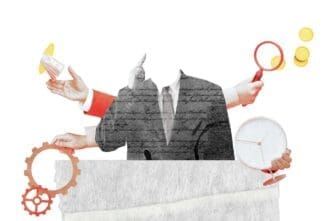Businesses, creators, and developers leveraging the explosive power of generative artificial intelligence are navigating a legal minefield where the maps are still being drawn. As tools like OpenAI’s ChatGPT and Midjourney become integral to workflows across industries, they are simultaneously creating profound legal uncertainties, primarily revolving around copyright ownership, intellectual property infringement, and liability. With landmark lawsuits now proceeding in courtrooms from San Francisco to London, the global business community is watching intently, because the core legal frameworks governing creation and ownership—like the U.S. Copyright Act—were never designed to accommodate non-human authors, leaving a vacuum of risk and ambiguity that demands immediate attention.
The central conflict is one of authorship. For centuries, copyright law has been predicated on a simple concept: a human creator. This principle is now being stress-tested in real-time, forcing regulators and courts to grapple with foundational questions about creativity itself.
The Copyright Conundrum: Authorship in the Age of Algorithms
At the heart of the legal debate is the question of who, if anyone, owns content generated by an AI. The answer is far from simple and is currently being shaped by administrative rulings and high-stakes litigation that could redefine intellectual property for the digital era.
Who Owns AI-Generated Art?
The United States Copyright Office (USCO) has taken a firm, though evolving, stance. Its guidance clarifies that works created solely by an autonomous AI system, without sufficient human creative input, cannot be copyrighted. The core requirement is human authorship, meaning a human must be the “master mind” behind the work, exercising creative control over its final expression.
This principle was famously tested in the case of “Zarya of the Dawn,” a comic book created by artist Kristina Kashtanova using the AI image generator Midjourney. In a landmark 2023 decision, the USCO granted copyright protection for the book’s text and the specific arrangement and composition of the images, which Kashtanova authored and selected. However, it explicitly refused to grant copyright for the individual images themselves, ruling they were “not the product of human authorship.”
This ruling establishes a critical precedent. Businesses using AI to generate images, text, or code must now consider the level of human intervention involved. Merely writing a simple prompt like “a photorealistic cat sitting on a fence at sunset” is unlikely to meet the threshold for copyright ownership. To secure a potential copyright claim, a user would need to demonstrate significant creative modification, arrangement, or direction of the AI’s output.
Training Data and the Fair Use Doctrine
The other side of the copyright coin involves the data used to train these powerful AI models. Generative AI systems learn by analyzing colossal datasets, often containing billions of images, articles, books, and lines of code scraped from the public internet. A significant portion of this training data is protected by copyright.
Tech companies argue that this process constitutes “fair use” under U.S. law—a legal doctrine that permits the limited use of copyrighted material without permission from the rights holders. They contend that training is a transformative use, creating a new tool rather than a substitute for the original works. Artists, authors, and media companies vehemently disagree, arguing it is mass-scale, uncompensated copyright infringement.
This clash is the basis for several major lawsuits. Getty Images is suing Stability AI, alleging the company illegally copied millions of its watermarked images to train its Stable Diffusion model. Similarly, a group of prominent authors, including Sarah Silverman, and major publications like The New York Times have filed suits against OpenAI and Microsoft, claiming their copyrighted works were used without permission to build the models that now power ChatGPT and other services.
The outcomes of these cases will have monumental consequences. If courts rule that training AI models on copyrighted data is not fair use, it could force developers to license all their training data or rebuild their models from scratch, fundamentally altering the economics of the entire AI industry.
Liability and Accountability: When AI Gets It Wrong
Beyond copyright, the use of AI-generated content introduces complex questions of liability. When an AI produces false, defamatory, or otherwise harmful information, determining who is legally responsible is a daunting challenge for which there is little legal precedent.
Defamation and AI “Hallucinations”
Generative AI models are prone to a phenomenon known as “hallucination,” where they produce confident, plausible-sounding information that is completely false. If a business uses an AI to generate a market analysis report that wrongly accuses a competitor of financial fraud, or a media outlet uses AI-generated text that defames a public figure, who is liable for the damage?
The potential defendants are numerous: the end-user who entered the prompt, the company that deployed the AI in its products, or the developer that built the AI model. Traditional defamation law requires proving that a false statement was published with a certain level of fault, such as negligence or actual malice. Applying these standards to a non-human agent that has no “state of mind” is a legal puzzle that courts have yet to solve.
For now, the legal risk likely falls most heavily on the user or publisher of the content. A business cannot simply blame the algorithm; it retains a duty of care to verify the accuracy of the information it disseminates, regardless of its origin.
Deepfakes and the Right of Publicity
The rise of AI-generated deepfakes—highly realistic but synthetic video or audio—has amplified concerns around the “right of publicity.” This legal right protects individuals from the unauthorized commercial use of their name, image, likeness, or other personal attributes. Celebrities are increasingly finding their likenesses used in AI-generated advertisements or inappropriate content without their consent.
A business that creates a marketing campaign using a deepfake of a famous actor, even if intended as parody, could face a lawsuit for violating that individual’s right of publicity. The legal risk is substantial, as damages can be based on the commercial value of the celebrity’s endorsement.
Navigating the Terms of Service: The Fine Print Matters
For any business using a generative AI platform, the most immediate and binding legal document is the provider’s Terms of Service (ToS). These agreements dictate ownership, usage rights, and liability, and they vary significantly between platforms.
Understanding Your Rights and a Provider’s License
Many users assume they own whatever they create with an AI tool. While often true, the details are crucial. OpenAI’s terms, for instance, state that the user owns the “Output” generated through their prompts. However, they also require users to grant OpenAI a broad license to use that same content to help develop and improve its services.
In contrast, Midjourney’s ToS has historically granted paying subscribers broad ownership rights, while free users grant Midjourney a near-perpetual license to do almost anything with their creations. Reading and understanding these terms is not just a formality; it is a critical step in risk management, especially when creating content for commercial use.
Indemnification and the Shifting of Risk
Recognizing the legal anxiety among their enterprise customers, some major AI providers have begun offering a powerful new protection: copyright indemnification. Companies like Microsoft, Google, and Adobe have introduced policies that promise to assume legal responsibility and cover the costs if a commercial customer is sued for copyright infringement over the output from their AI tools.
This represents a significant shift, moving some of the risk from the user back to the large tech developer. However, these “copyright shields” come with important caveats. They typically only apply to paying customers using specific enterprise products and often require that users did not intentionally try to generate infringing content and used the platform’s built-in content filters.
The Emerging Regulatory Horizon
Governments worldwide are racing to catch up with the technology. Lawmakers are actively working on new regulations to govern AI development and deployment, which will add another layer of legal complexity for businesses.
The European Union’s AI Act
The European Union is at the forefront with its comprehensive AI Act, the world’s first major law dedicated to regulating artificial intelligence. For generative AI, the Act imposes strict transparency obligations. Developers of models like ChatGPT will be required to disclose that content is AI-generated, design the model to prevent it from generating illegal content, and publish detailed summaries of the copyrighted data used for training.
Legislative Efforts in the United States
In the U.S., the approach is more fragmented. President Biden’s 2023 Executive Order on AI set a national direction focused on safety and security, but there is no single federal law equivalent to the EU’s AI Act. Instead, a patchwork of state-level laws and congressional proposals are emerging, addressing issues from deepfake disclosure to algorithmic bias and data privacy.
For businesses, this means the legal compliance landscape will likely remain a complex mosaic of state and federal rules for the foreseeable future, requiring constant monitoring.
Ultimately, the legal questions surrounding AI-generated content are far from settled. The foundational pillars of intellectual property and liability are being shaken, and the law is struggling to keep pace with the velocity of innovation. For businesses and creators, the path forward requires a strategy of informed caution. This involves scrutinizing terms of service, documenting human creative input, implementing strict verification protocols for AI-generated facts, and seeking proactive legal counsel. While generative AI offers transformative potential, its adoption must be balanced with a clear-eyed understanding of the profound legal risks that accompany it.








